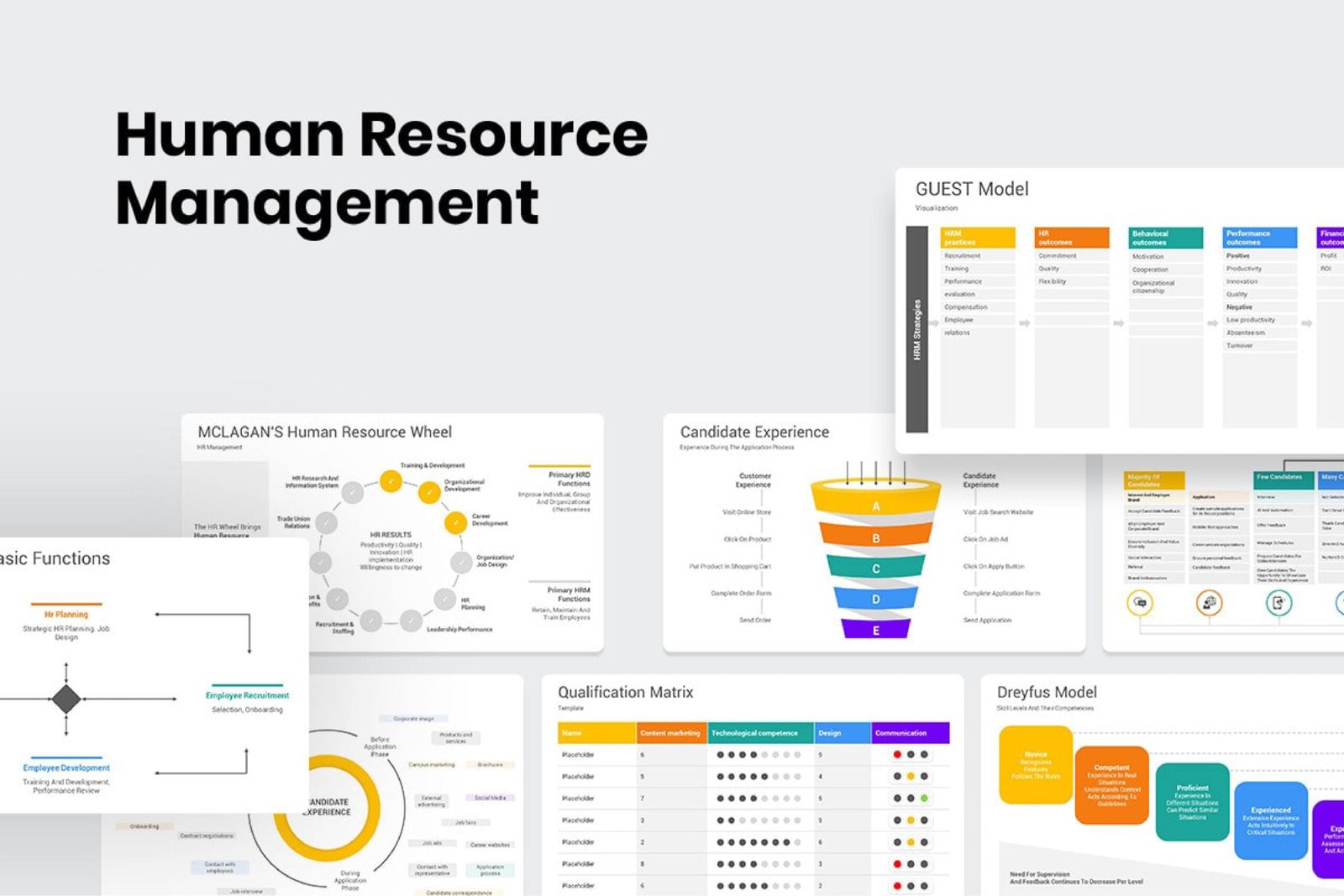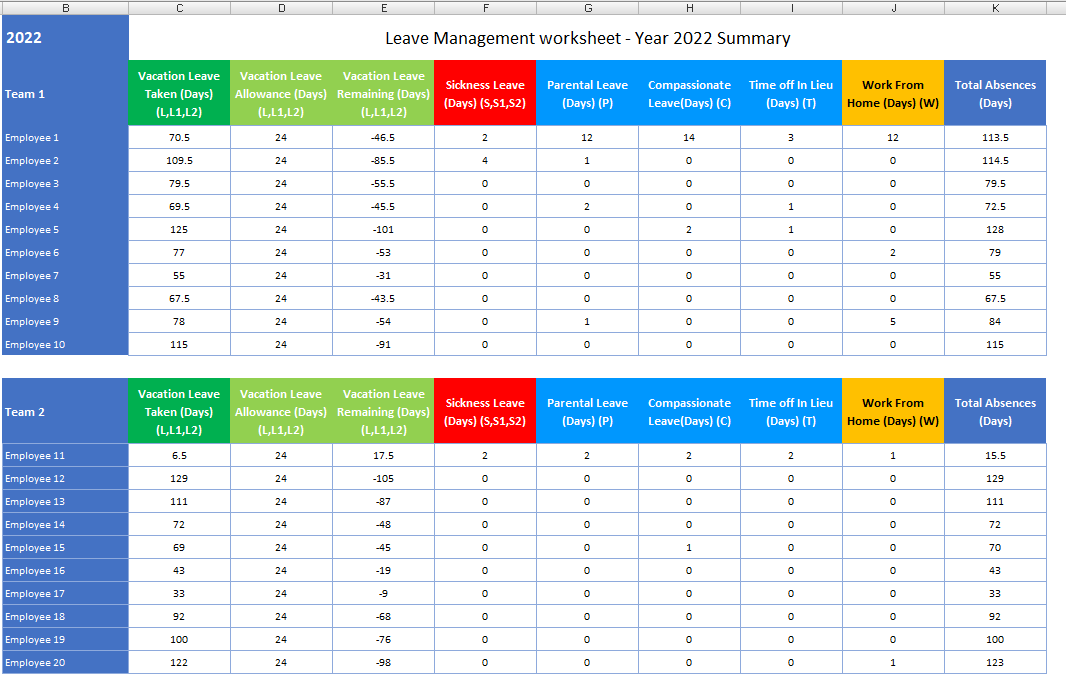If you are looking for HR templates, then this platform is perfect for you. As, we provide you with the best Excel Templates that fulfill your needs and requirements. Human Resource (HR) management stands as a cornerstone in any organization, ensuring that the workforce operates efficiently and aligns with the strategic goals. In the realm of project management, effective HR management becomes even more critical, given the temporary and unique nature of projects. HR Management Templates emerge as indispensable tools, streamlining various HR functions and enhancing overall productivity.
The Role of HR Management in Project Management:
HR management in project management involves planning, organizing, and managing project teams. It encompasses activities such as recruiting, training, performance evaluation, and ensuring compliance with labor laws. Proper HR management guarantees that the right people are in the right roles, contributing to project success.

Key Aspects of HR Management:
1.Recruitment and Selection Recruitment and selection form the first step in HR management. Templates for job descriptions, interview schedules, and evaluation forms streamline the hiring process. Clear job descriptions help attract suitable candidates, while structured interview templates ensure consistency and fairness in candidate evaluation.
2.Onboarding Onboarding templates provide a structured approach to integrating new hires into the organization. These templates often include checklists for documentation, orientation schedules, and training plans. Effective onboarding enhances employee engagement and reduces the time taken for new employees to become productive.
Related Article: 6 Tips To Design Project Status Report Template – PMITOOLS
3.Training and Development Training and development are crucial for skill enhancement and career progression. Templates for training needs analysis, training schedules, and feedback forms facilitate the planning and execution of training programs. These templates ensure that training aligns with organizational goals and addresses the specific needs of employees.
4.Performance Management Performance management templates assist in setting clear performance expectations, conducting evaluations, and providing feedback. Templates for performance appraisal forms, goal-setting documents, and performance improvement plans help standardize the process, ensuring fairness and consistency.
5.Employee Relations Managing employee relations involves handling grievances, conflicts, and maintaining a positive work environment. Templates for grievance forms, disciplinary action records, and employee feedback forms provide a structured approach to addressing and resolving issues. These templates promote transparency and help maintain employee morale.
6.Compensation and Benefits Compensation and benefits templates help in designing and managing employee remuneration packages. Salary structures, bonus plans, and benefits summaries ensure that compensation aligns with industry standards and organizational policies. These templates assist in maintaining equity and competitiveness in the job market.
7.Compliance and Legal Ensuring compliance with labor laws and regulations is a critical aspect of HR management. Templates for employment contracts, policy documents, and compliance checklists help in adhering to legal requirements. These templates mitigate the risk of legal issues and ensure that the organization operates within the legal framework.
8.Exit Management Exit management involves handling the separation process of employees. Templates for resignation letters, exit interviews, and clearance forms streamline the offboarding process. Effective exit management ensures that departing employees leave on good terms and that valuable feedback is gathered for organizational improvement.
Related Article: 8 Components Of Employee Management System- PMITOOLS
Role in Project Management:
In project management, these templates play a vital role in managing project teams. They help in resource planning, role allocation, and performance tracking, ensuring that projects are delivered on time and within budget.
- Resource Planning Templates assist in identifying the required skills and allocating resources efficiently. These templates often include resource availability charts, skill matrices, and workload analysis sheets. Proper resource planning ensures that the project team has the right mix of skills and that resources are utilized optimally.
- Role Allocation Templates define the responsibilities and roles of each team member. These templates include responsibility assignment matrices (RAM), RACI charts (Responsible, Accountable, Consulted, Informed), and role descriptions. Clear role allocation prevents overlap of duties and ensures accountability.
- Team Communication Templates Effective communication is crucial for project success. These templates, such as meeting agendas, minutes of meetings, and communication plans, facilitate structured and clear communication. These templates ensure that all team members are informed and aligned with project goals.
- Performance Tracking Templates help in monitoring the progress of project tasks and team performance. Templates such as project dashboards, progress reports, and performance scorecards provide a visual representation of project status. These templates enable timely identification of issues and facilitate corrective actions.
- Risk Management Templates Managing risks is a critical aspect of project management. These templates, including risk registers, risk assessment matrices, and mitigation plans, provide a structured approach to identifying and addressing risks. These templates ensure that potential issues are anticipated and managed proactively.
Related Article: Top 3 HR Plan Templates Excel Download – PMITOOLS
Benefits:
- Standardization Templates bring uniformity to HR processes, ensuring consistency and fairness. Standardized processes facilitate easier training of HR personnel and improve overall efficiency.
- Efficiency Templates save time by providing ready-made structures for various HR activities. This efficiency allows HR professionals to focus on strategic tasks rather than administrative ones.
- Compliance Templates ensure adherence to legal and regulatory requirements. They provide a documented trail of HR activities, which is essential for audits and legal compliance.
- Transparency Templates promote transparency in HR processes by clearly defining procedures and expectations. Transparent processes enhance employee trust and engagement.
- Cost-Effectiveness By streamlining HR processes, templates reduce administrative overheads. This cost-effectiveness benefits the organization by allowing better allocation of resources.
Related Article: 10 Tips To Build An Employee Task Tracker Template – PMITOOLS

Implementation:
- Assessment Assess the current HR processes to identify areas that need standardization. Determine the specific templates required based on the organization’s needs.
- Customization Customize the templates to align with the organization’s policies and culture. Ensure that the templates are flexible enough to accommodate changes in the business environment.
- Training Train HR personnel and managers on how to use the templates effectively. Provide guidance on the importance of using templates and the benefits they bring.
- Implementation Roll out the templates across the organization. Ensure that there is a clear communication plan to inform all employees about the new processes.
- Review Regularly review the templates to ensure they remain relevant and effective. Update the templates based on feedback from users and changes in legal requirements.
Read More: Human resource management – Wikipedia
Conclusion:
In short, HR Management Templates are essential tools that enhance the efficiency and effectiveness of HR functions, particularly in project management. They provide a structured approach to managing various HR activities, from recruitment to exit management. By standardizing processes, improving compliance, and promoting transparency, these templates contribute significantly to organizational success. Implementing these templates requires careful assessment, customization, training, and regular review. When used effectively, they not only streamline HR operations but also support the strategic goals of the organization, ensuring that the right people are in the right roles, working towards the successful completion of projects.

